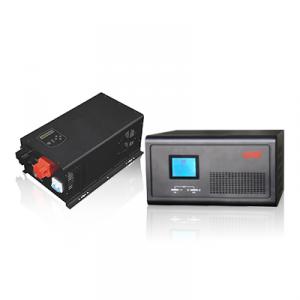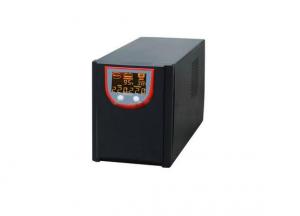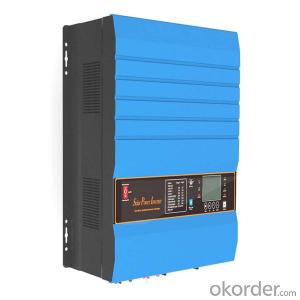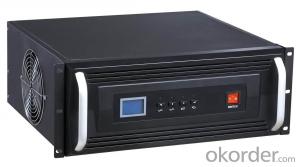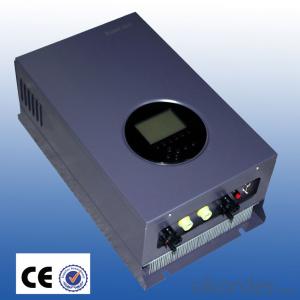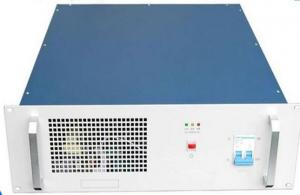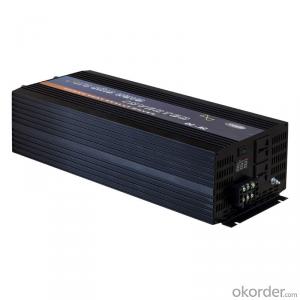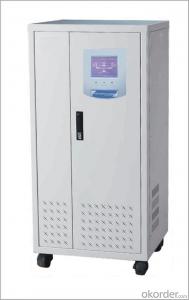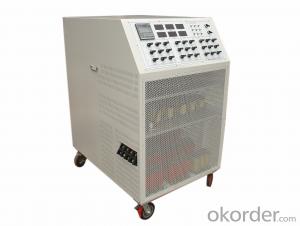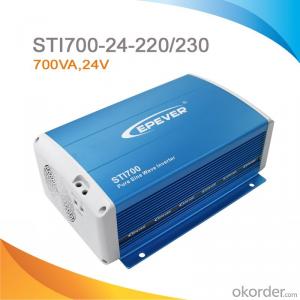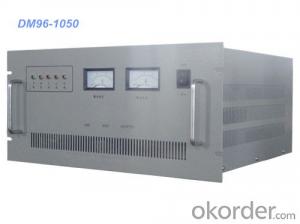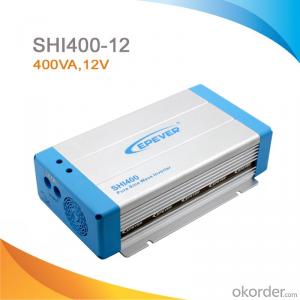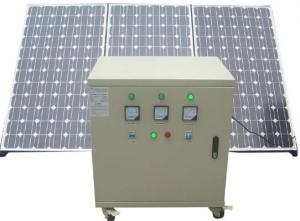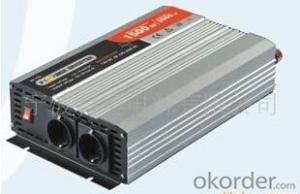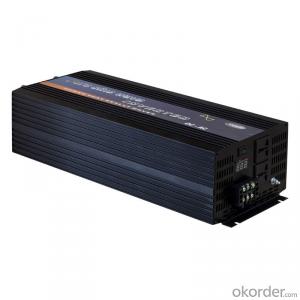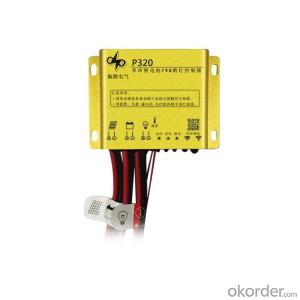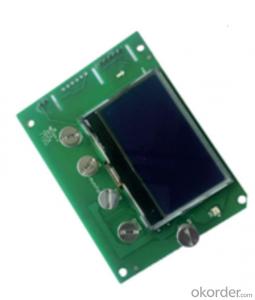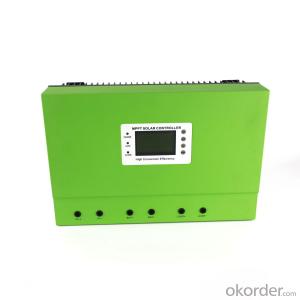Pure Sine Solar Inverter
Pure Sine Solar Inverter Related Searches
Home Power Inverter For Solar Solar Power Inverter For House Solar Power Inverter For Rv High Power Solar Inverter Cost Of Solar Power Inverter Solar Power Inverter System Power Inverter Solar Panel Inverter Ac On Solar Power Solar Power 3 Phase Inverter Cheap Solar Power InverterHot Searches
Solar Inverter For Laptop Solar Inverter For Fridge Solar Inverter Price In Kenya Solar Inverter Price In Kerala Solar Inverter Price In Ghana Solar Inverter Price In Nepal Solar Inverter Price In Ksa China Solar Inverter Price Best China Solar Inverter Solar Inverter Supplier In Uae Solar Inverter In Dubai Solar Inverter In Saudi Arabia Solar Inverter In Uae Solar Inverter In Kerala Solar Inverter In Nepal Solar Inverter In Burpengary Solar Inverter In Caboolture Solar Inverter In Chennai Solar Inverter In Lebanon China Hybrid Solar InverterPure Sine Solar Inverter Supplier & Manufacturer from China
Okorder.com is a professional Pure Sine Solar Inverter supplier & manufacturer, offers integrated one-stop services including real-time quoting and online cargo tracking. We are funded by CNBM Group, a Fortune 500 enterprise and the largest Pure Sine Solar Inverter firm in China.Hot Products
FAQ
- To determine the maximum load output current for a solar controller, you will need to consider a few key factors. Firstly, check the specifications provided by the manufacturer of the solar controller. This information is usually available in the product manual or on the manufacturer's website. Look for the maximum load output current rating, which is typically given in amps (A). Additionally, consider the size and capacity of your solar panel system. The maximum load output current of the solar controller should be compatible with the capacity of your solar panels. If your solar panels have a higher output current than the controller's maximum load output current, it may lead to system inefficiencies or potential damage. Moreover, it is important to consider the load you intend to connect to the solar controller. Determine the maximum current that the load requires to operate properly. Ensure that the load's current requirement is within the range supported by the solar controller. If the load's current requirement exceeds the maximum load output current of the controller, it may result in the overload or malfunctioning of the controller. Lastly, always consult with a professional or an electrician experienced in solar systems if you have any doubts or concerns. They can provide valuable advice based on your specific system requirements and help ensure that the solar controller is properly matched with the load and solar panel capacity.
- The maximum charging temperature a solar controller can handle typically varies, but most controllers can safely operate within a range of 113 to 131 degrees Fahrenheit (45 to 55 degrees Celsius).
- A solar controller prevents battery over-temperature by continuously monitoring the temperature of the battery. It regulates the charging current and voltage to ensure that the battery does not get excessively hot, which could lead to damage or reduced battery life. It may also incorporate features like temperature sensors, temperature compensation, and thermal protection mechanisms to safeguard the battery from overheating.
- Yes, a solar controller can be used with a solar-powered bus stop. A solar controller regulates the power output from the solar panels to ensure efficient charging and protection of the batteries. It is an essential component in managing and controlling the energy flow in a solar-powered system, including a bus stop.
- The maximum load temperature a solar controller can handle varies depending on the specific model and manufacturer. It is important to consult the product specifications provided by the manufacturer to determine the maximum load temperature for a particular solar controller.
- A solar controller is designed to regulate and control the charging process of solar panels to ensure the optimal performance and safety of the system. When it comes to short-circuit conditions, the solar controller employs various mechanisms to handle such situations. Firstly, a solar controller typically incorporates short-circuit protection features. These features are often in the form of internal fuses or circuit breakers that are designed to trip or open the circuit in the event of a short circuit. This helps to prevent excessive current flow that could potentially damage the solar panels or other connected components. Additionally, the solar controller may also include overcurrent protection mechanisms. These mechanisms work by monitoring the current flowing through the system and automatically reducing or cutting off the current when it exceeds a predetermined threshold. This helps to prevent damage to the solar panels or other components in the event of a short circuit. Furthermore, some advanced solar controllers utilize microprocessors or microcontrollers to monitor and analyze the system's conditions. These microprocessors are programmed to detect short-circuit conditions by continuously monitoring the voltage and current levels. In the event of a short circuit, the microprocessor can quickly respond by shutting down the charging process or activating the short-circuit protection mechanisms. Overall, a solar controller is equipped with various protective measures to handle short-circuit conditions. These measures include short-circuit protection features such as fuses or circuit breakers, overcurrent protection mechanisms, and advanced monitoring systems. By employing these mechanisms, the solar controller ensures the safety and longevity of the solar panels and the entire solar power system.
- To connect a solar controller to your solar panels, follow these steps: 1. Identify the positive and negative terminals on both the solar panels and the solar controller. 2. Connect the positive terminal of the solar panel to the positive terminal of the solar controller using a suitable wire or cable. 3. Connect the negative terminal of the solar panel to the negative terminal of the solar controller using another appropriate wire or cable. 4. Ensure that the connections are secure and tight to avoid any loose connections or potential electrical hazards. 5. Once the connections are made, the solar controller should be able to regulate the flow of electricity from the solar panels to the battery or load, depending on your system setup. Remember to always refer to the manufacturer's instructions and guidelines specific to your solar controller and panels to ensure proper installation and connection.
- The specific model and technical specifications of a solar controller determine its maximum input power capacity. Solar controllers are generally designed to accommodate various solar panel configurations and sizes by being capable of handling a wide range of input power levels. The maximum input power capacity of a solar controller is typically indicated by its maximum supported solar panel wattage. For instance, a solar controller may have a rating of 300 watts or 600 watts for its maximum input power. This means that it can effectively regulate and convert the energy generated by solar panels with a combined wattage of up to the specified power level. To ensure optimal performance and prevent any potential damage to the solar controller, it is crucial to select a controller that can handle the maximum input power of the solar panel system. Exceeding the maximum input power rating of a solar controller can result in overheating, reduced efficiency, or even failure of the controller. When choosing a solar controller, it is advisable to consider the total wattage of the solar panels in the system and select a controller that can comfortably handle that power level. Additionally, consulting the manufacturer's specifications and guidelines for proper selection and installation of the solar controller is recommended to ensure compatibility and safety.








